Whether you have a walk-in closet, a narrow built-in for storing clothes, an armoire, or wardrobe furniture, once you learn about how to light a closet properly, you’ll want to apply these techniques all over the home.
According to research from the National Association of Home Builders, today’s homebuyers are asking for larger homes —especially since the pandemic started as interest rates have fallen and families need more space to accommodate at-home learning, home offices, and exercise rooms.
This increase in square footage has led many homeowners to transform “spare” bedrooms into alternative uses that include expansive walk-in closets big enough to accommodate a center island (much like a kitchen) with multi-sided drawers and a flat surface for folding or organizing clothes.
While the bedrooms of previous generations typically relied on wardrobe furniture – which unfortunately takes up precious space – today’s homeowners are opting for large walk-in dressing areas or the seamless look of “invisible” closet fronts with no noticeable hardware that offer a clean, uninterrupted line with the wall while hiding built-in storage.
Another popular option recently trending among homeowners is the idea of showcasing footwear and clothing collections almost like a retail store would, with transparent shelving or door fronts highlighted by accent lighting.
Whether you decide to show off your wardrobe collection or hide it behind doors, good lighting is key.
“It’s important to have different layers of lighting in the dressing area,” notes renowned Manhattan-based interior designer Mary Knackstedt, who is responsible for many luxury renovations and new construction projects on the East Coast.
“The most major consideration is to have even illumination so you can clearly see into the corners [of a closet] with no dark areas,” she explains. “I want the lighting to be as color-true as possible so that my clients can match colors properly.” In poor-quality light, dark colors such as navy blue, steel blue, charcoal, and slate gray can be difficult to distinguish.
“You can do incredible things with lighting,” she reveals. In a large walk-in closet or dressing suite, Knackstedt likes to install soft accent lighting on the ceiling in addition to other sources of light. While Instagram and home design magazines are rife with beautiful chandeliers in these applications, Knackstedt urges homeowners to put practicality first. “You can have a decorative lighting fixture to beautify that space, just don’t be dependent on it as the sole light source. Have a chandelier, but also install LED accent light on the ceiling or LED strip light along the closet rods or highlighting shelves.”
She is a fan of LED as a light source in part because it emits low heat and low UV unlike incandescent light. “LEDs last longer and hold their color quality longer,” she states. As for those luxury dressing room spaces that offer plenty of natural light, Knackstedt has a cautionary tale. She knows of one homeowner with a gorgeous closet equipped with a skylight and filled with a collection of luxury brand navy blue blazers. The man was dismayed to discover that one side of his jackets had faded in color from the exposure to natural sunlight’s ultraviolet rays streaming in from the skylight. Using LED to illuminate that closet would have greatly reduced the risk of UV damage to the expensive fabrics.
Other convenient attributes of LED include dimming and color-tuning the light from warm tones (candlelight) to cool (noontime sun) to help the homeowner assess the look of their wardrobe choice in those conditions.
“What’s key is to light that room – whether a closet or dressing area – evenly, with no shadows. I want to make sure that when I’m looking at a piece of clothing, that I can see if there’s a loose thread or a spot on it,” Knackstedt comments.
If at all possible, she recommends putting the lighting on a motion sensor control to increase energy savings and eliminate the risk of heat or color fading, adding, “What if someone forgets to turn the light out and is gone all day, or it’s a closet in a vacation home that they only visit on weekends and they’ve left the light on?”
Properly illuminating your dressing areas, walk-in closets, and built-in closets is an inexpensive solution that provides convenience and easily helps you save time getting ready in the mornings or before a night out. Whether you are looking for a fashion-forward lighting fixture to serve as a style centerpiece for your dressing area or seeking accent lighting for the interior of a closet using strip/tape light, LightsOnline has the lighting solutions you need.
Read more:

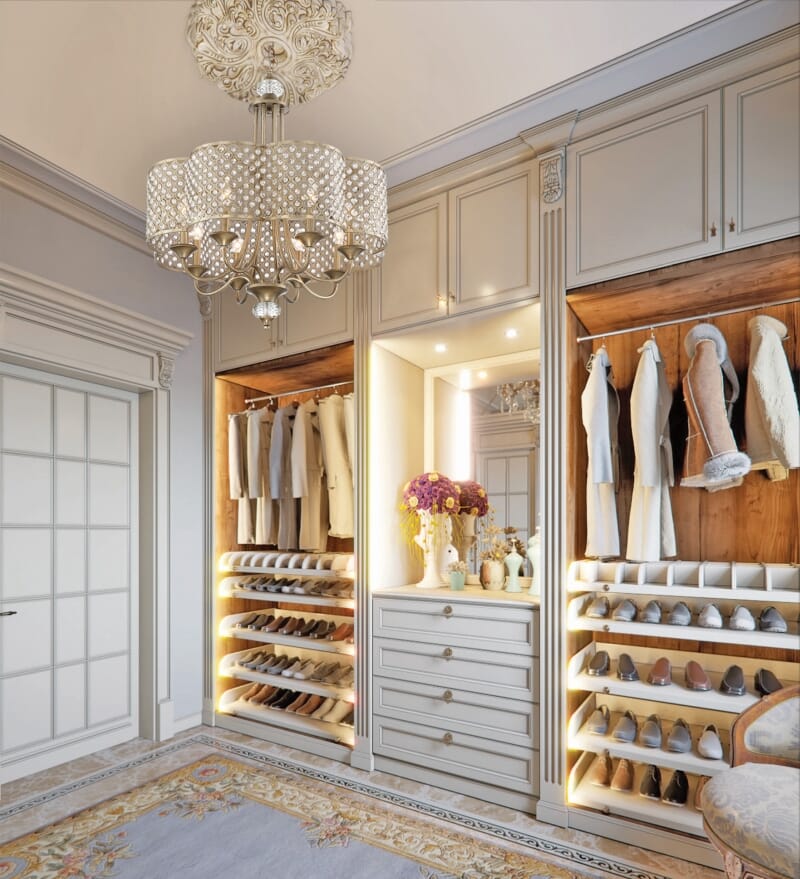
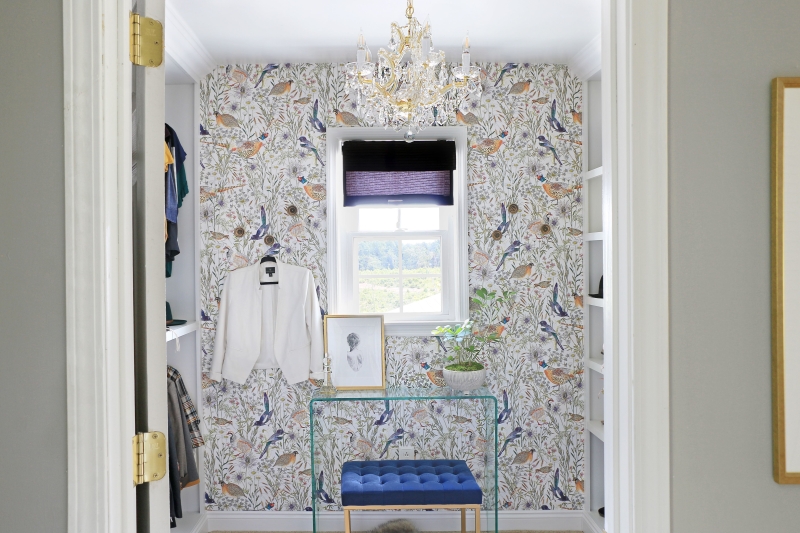
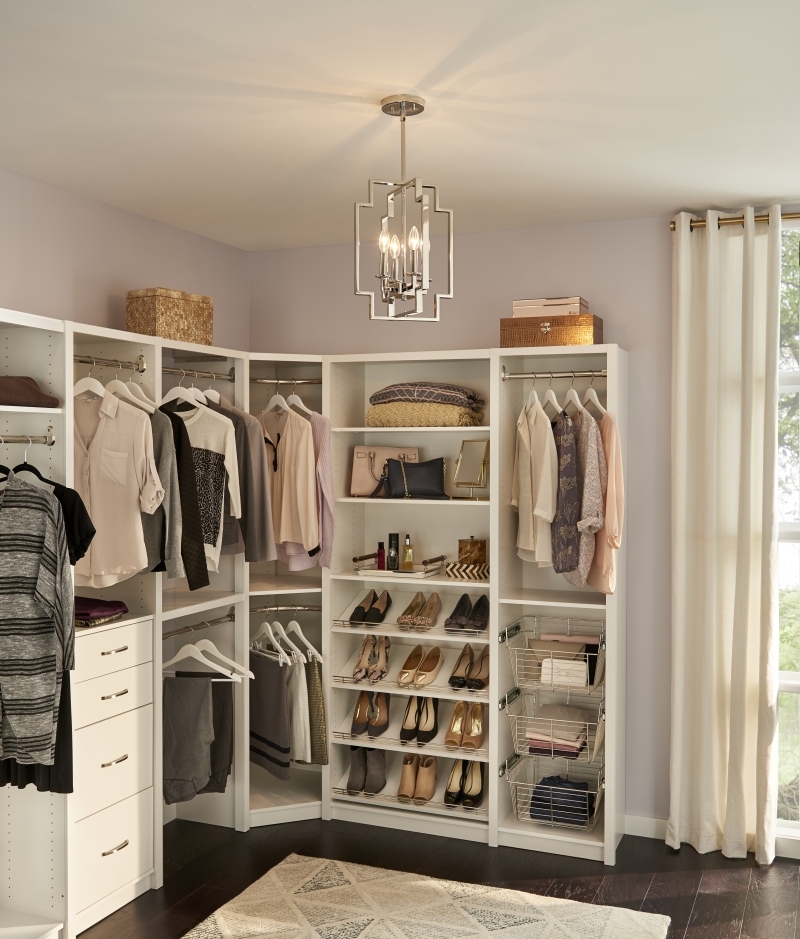
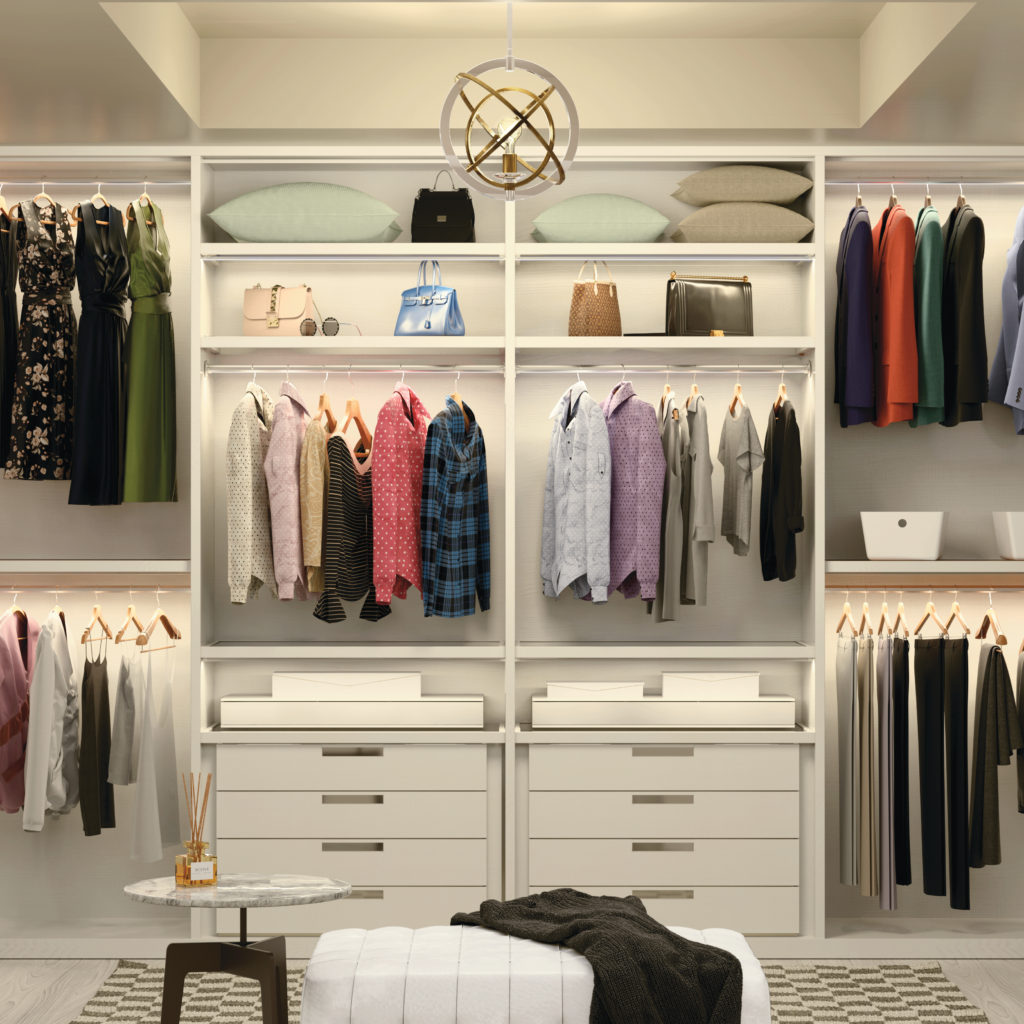
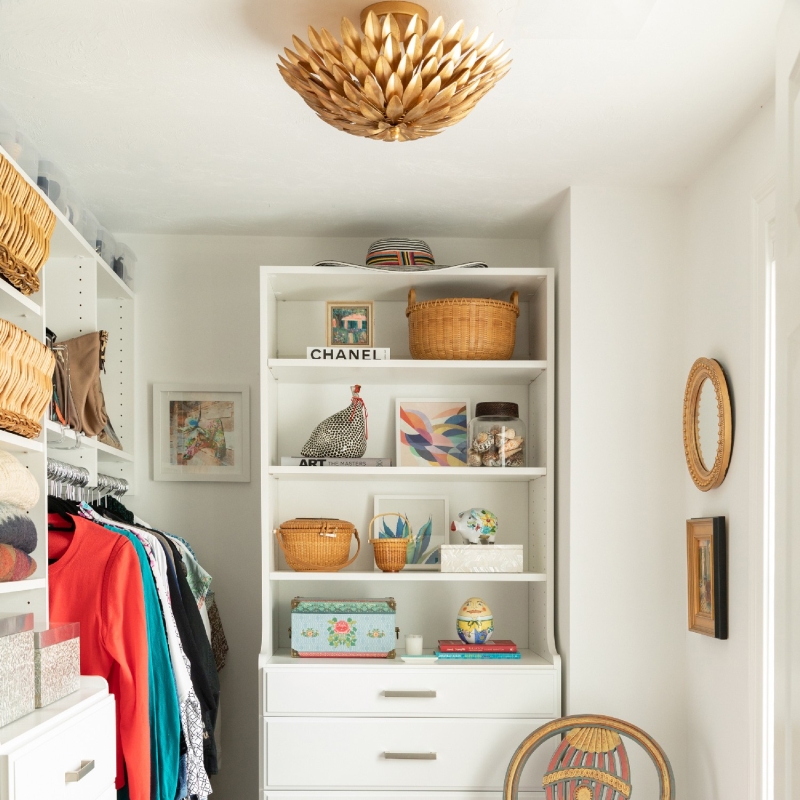



April 23, 2021
[…] spaces that may involve vertical storage (i.e. mud rooms, laundry rooms, or closets), a flush light can help you maximize storage space. Conversely, if a semi-flush were used in a 7- […]
December 21, 2022
[…] Langdon for Crystorama ceiling light: Add a touch of Art Deco style to smaller rooms (like a closet, maybe?) with this […]